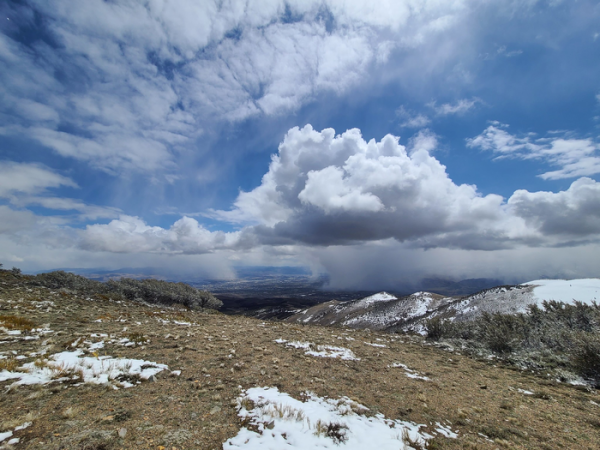Snow-capped mountains aren’t just scenic – they also provide natural water storage by creating reservoirs of frozen water that slowly melt into watersheds throughout the spring and summer months. Much of the Western U.S. relies on this process to renew and sustain freshwater supplies, and new research underscores the impacts of extreme weather conditions on this annual cycle.
In a study published Jan. 5th in Environmental Research Letters, DRI researchers examine the role of spring heatwaves on the melting rates of mountain snowpacks across the West. They found that in April 2021, record-breaking snowmelt rates occurred at 24% of all mountain snowpack monitoring sites in the region, further compounding the impacts of extended drought conditions. Rapid snowmelt increases the time when our natural snowpack reservoir is emptied and when this water is most needed later in the warm season.
“One thing that stood out was the spatial pattern,” says Daniel McEvoy, Ph.D., DRI climatologist and co-author of the new study. “It wasn’t just one single mountain range or one part of the West – there were snowmelt records across the entire Western U.S., in all 11 states.”
Read more at: Desert Research Institute
Snowmelt on Peavine Peak above Reno, NV. (Photo Credit: Jesse Juchtzer/DRI Science)


